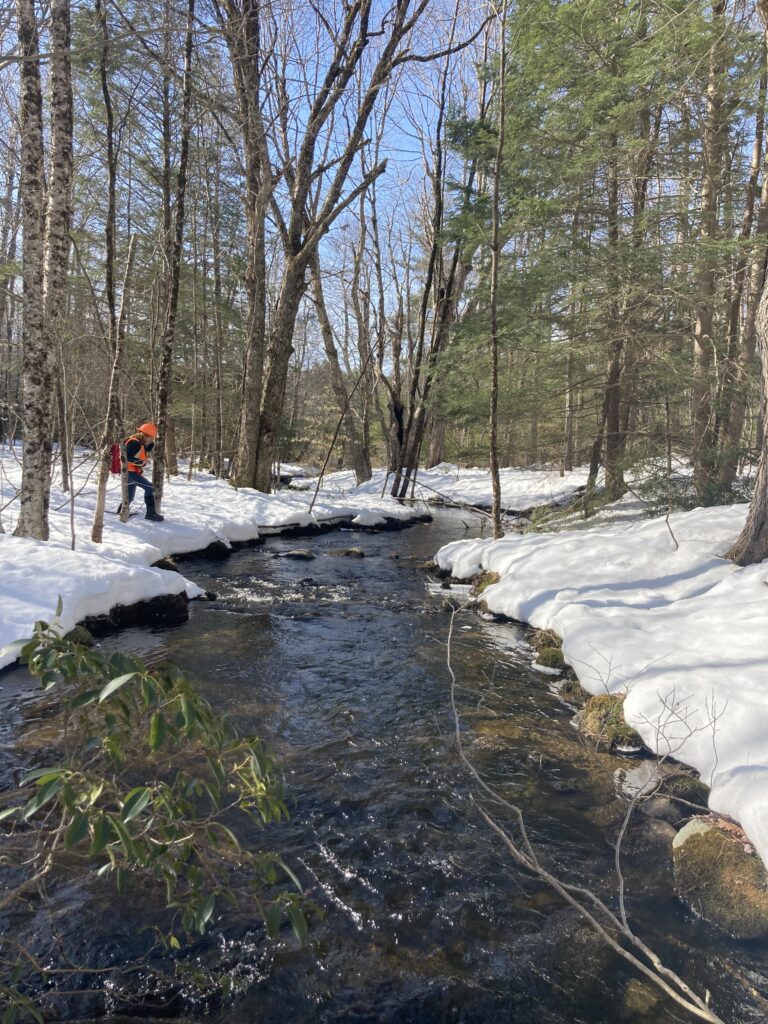This property was acquired for water supply protection in accordance with the Massachusetts General Laws Chapter 40N, Section, and Article 97 of the Amendments to the Massachusetts Constitution.
This parcel was funded by a Massachusetts Drinking Water Protection Supply Grant and the Springfield Water and Sewer Commission and will remain in a natural, scenic and open condition for the purpose of wildlife conservation, forest health and drinking water supply protection.

Acreage
The Hull Conservation Area is 12.101 Acres.
Parking/Access
Hull Conservation Area is accessible off Gibbs Road in the northwestern portion of Blandford on the western edge of Hampden County. There is a parking area and informational kiosk located on Gibbs Road.
History
The property was purchased from William Hull in 2021.
Permitted Recreational Activities
- Hiking
- Cross country skiing and snowshoeing
- Recreational hunting
- Plant and wildlife observation
Prohibited Recreational Activities
- Motorized vehicles
- Campfires
- Camping
- Mountain Biking
- Dumping
- Land or vegetation alterations
- Domestic animals including dogs and horses
- Disorderly conduct
- Vandalism
- Fishing
- Organized sports activities
- Boats of any kind, with or without motors
- Public assemblies or groups of more than 10 persons
- Metal detectors or the use of similar devices
Notable Features
Hull conservation area has an abundance of wildlife habitat in both the 6-acre field in the front of the property and forested land in the rear. Watson Brook and wetland areas in the forested portion of the property provides a water source and forest cover for pollinators. Forest edges along the field provide nesting and foraging habitat for pollinators, as well as connectivity to surrounding habitat.
Two species of cool season grass have been identified (Creeping Bent and Timothy Grass). Timothy, known as palatable pasture grass, produces seeds that feed songbirds, gamebirds and white-tailed deer. Creeping bent provides fair nutritional value for white-tailed deer, small mammals and songbirds and sufficient cover for nesting.